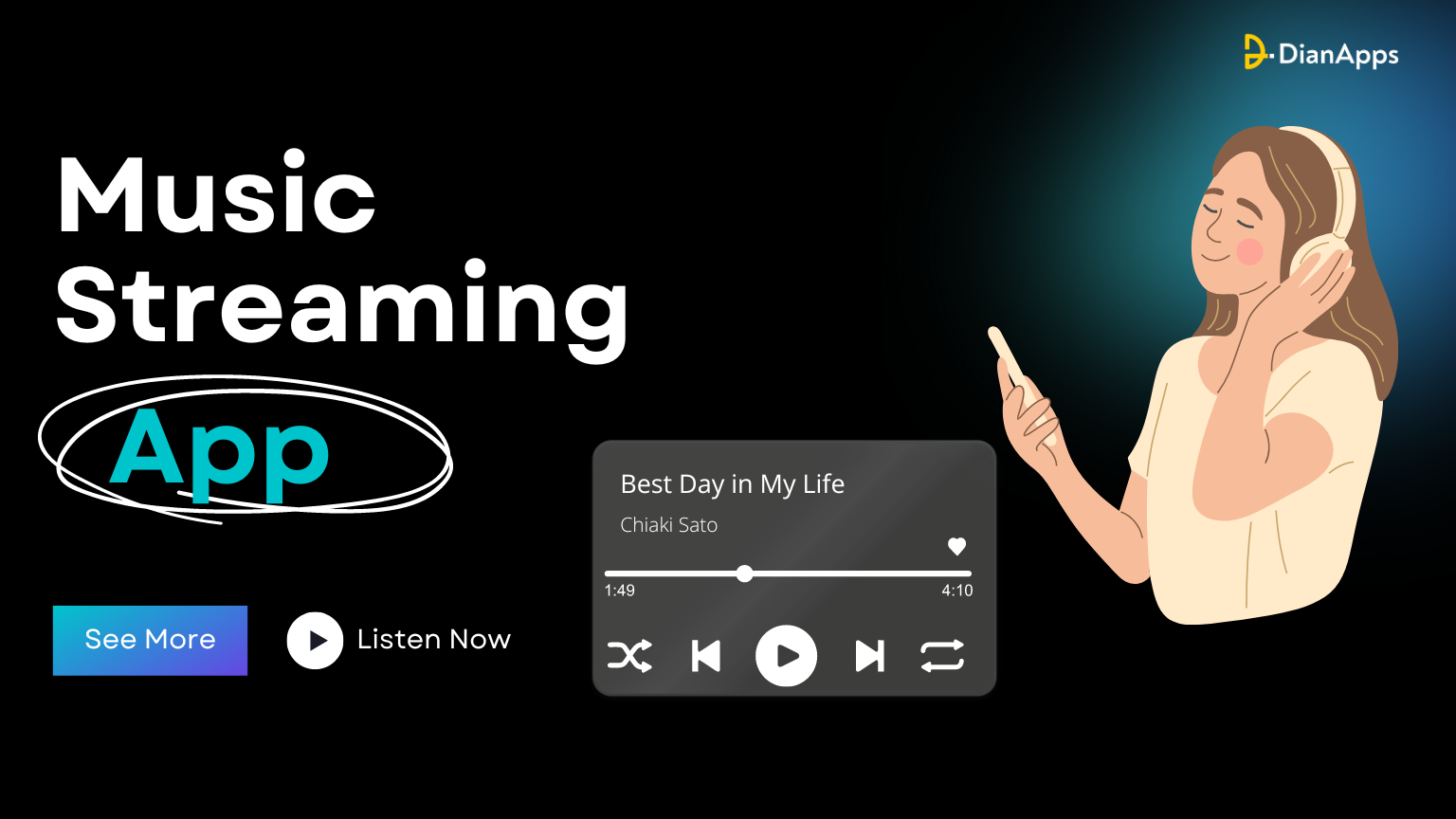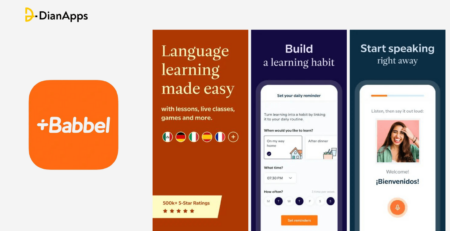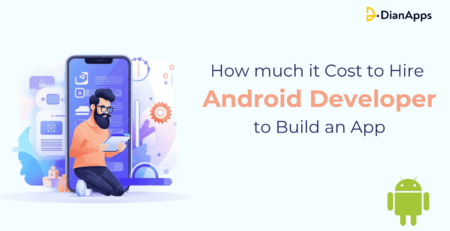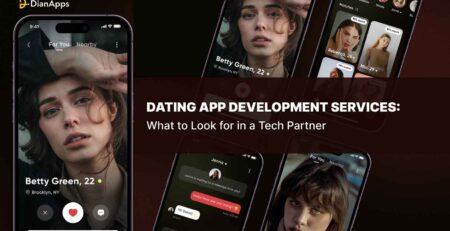Building a Music Streaming App Like Spotify: A Guide for 2023
Technology has caused a huge boom in the music streaming market, with a wide variety of apps available on both iOS and Android. These apps have made it incredibly easy for music lovers to listen to their favorite songs whenever and wherever they want.
As we approach the future the demand for music streaming apps continues to rise, presenting an incredible opportunity for businesses to enter this lucrative market. However, it takes careful planning and execution to successfully develop a music-streaming mobile app development company.
In this comprehensive guide, we will spill the secrets to creating a music streaming app that can compete with rivals like Spotify. We will walk you through the essential steps, from conducting extensive market research to understanding user preferences and industry trends to define your unique value proposition that sets your app apart.
Securing proper licensing agreements, building a robust technical infrastructure, and designing an intuitive UX are crucial aspects that cannot be overlooked. We’ve already discussed famous UX design trends in one of our previous articles. Now, we are also going to explore the significance of personalized recommendations, social features, and community engagement to keep users hooked.
Furthermore, this blog covers various monetization strategies and effective marketing techniques to ensure the success and profitability of your music-streaming app.
let’s find out how music streaming app development and website development can resonate with users, brings harmony to their lives, and makes your mark in the thriving world of music streaming in 2023 and beyond.
Wondering how music streaming apps work?
Here’s an in-depth overview of how such an app works:
Content procurement
To obtain the rights to stream live performances, the app works with music labels, festival directors, or individual artists. This could include obtaining licenses or agreements to broadcast the content.
Encoding and delivering content
The live performances are recorded using professional cameras and audio equipment at the venue. The raw audio and video signals are encoded and compressed into a suitable format for internet streaming. The encoded data is then sent to the app’s servers.
Content distribution
The venue transmits the encoded data to the app’s servers, which distribute it to users in real-time. This involves the use of content delivery networks (CDNs) to ensure the efficient and dependable delivery of streams to users in various geographical locations. CDNs assist in reducing latency and handling high-traffic loads.
User interface
Users can browse and discover live music events using the app’s user-friendly interface. It may include functions such as searching for specific artists, genres, or upcoming performances, creating playlists, and gaining access to additional information about the artists and events.
User registration and authentication
To access live streaming content, users must typically create an account and log in. This enables the app to personalize recommendations, remember user preferences, and possibly offer premium features or subscriptions.
Live streaming experience
After logging in, users can choose a live music performance to view. The app accesses the corresponding live stream from the servers and shows it to the user in real-time. According to the user’s internet connection and device capabilities, the app might offer options for adjusting video quality.
Interaction and engagement
Live music streaming mobile app developers often include interactive features to improve the user experience. This can include real-time chat or comments that allow users to communicate with one another or with the artist, virtual applause or reactions, and social media integration for sharing the experience.
Monetization
Live music streaming apps generate revenue in a variety of ways. This can include providing free ad-supported streaming, paid subscriptions for premium content or features, merchandise sales, brand partnerships or sponsorships, and potentially sharing revenue with artists or event organizers.
Analytics and insights
To better understand user behavior, preferences, and trends, the app may gather analytics and user data. This data can be used to enhance the functionality of the app, suggest personalized content, and make data-driven choices about upcoming collaborations or marketing tactics.
Market demographics of music streaming apps
If the recent statistics have anything to go through, music app revenue increased by 500% between 2014 and 2020. Not only that but revenue growth is expected to exceed $100 billion USD per year beginning in 2019 and continuing through 2023. The music app business benefits from recurring revenue due to the constant increase in the number of app users.

- On the global level, the music streaming market is anticipated to be worth USD 103.07 billion by 2030. It is expected to grow at a 14.7% CAGR from 2022 to 2030.
- In global comparison, the United States is expected to generate the most revenue, amounting to US $10,200.00 million in 2023.
- Approximately 82 million Americans use on-demand app development services to build music streaming apps with a monthly fee of $10 on average.
- The Music Streaming market is expected to generate a total of US$10.20 billion in revenue by the end of 2023.
Various types of music streaming services
Most prominent online music streaming mobile apps are readily available in a variety of formats and offer a variety of listening options; however, the list of most popular music services goes like this:
Music media libraries
Amazon Music HD, Spotify, Apple Music, Pandora, SoundCloud, and YouTube Music are a couple of examples of such types of apps. In this case, users pay a monthly subscription fee and have access to all songs. As a result, there would be no costs for purchasing individual songs/albums/music. When a user opts for Amazon Music HD, they gain access to up to 50 million files that can be streamed at 850 kbps. This would cost twice as much as the alternative services. Even uncompressed, 24-bit lossless FLAC files are available for streaming here.
Cloud storage-based music players
This category includes apps such as CloudPlayer, pCloud, AudioBox, and Beat. Cloud storage is commonly provided by large platforms to organize and manage media files. As an example, pCloud is well-known for providing 10GB of free online storage, allowing its users to play media files online, and even providing a locally encrypted secure option.
Radio streaming services
This app category is best known for AccuRadio, iHeartRadio, and SiriusXM. Radio stations are well-known for focusing on the automated search for music, which is then delivered to users in the form of genre playlists, artist-centric lists, curated lists, and much more. They provide ad-free custom stations on iHeartRadio. Not only are they simple to use, but the app also has an Offline feature that is available for both the iOS and Android versions of the app. Meanwhile, the price for iHeart All Access for the web and Google Play Store signup is $9.99/month, whereas the price for the iOS App Store sign-up is $12.99.
Monetization opportunities for music streaming services & apps
Even if the app you created is free, there are numerous monetization opportunities. However, there are primarily five major ways to monetize a music streaming app, namely:
-
Advertisements
Music streaming apps make money by displaying targeted advertisements to their users. These advertisements can be audio or visual, offering a platform for brands to reach a large audience while users enjoy music at no charge.
-
Subscription model
Users must pay a monthly subscription fee to gain access to premium features such as ad-free listening, high-quality audio, and exclusive content. This model ensures a consistent revenue stream for music streaming apps while providing a better experience for paying subscribers.
-
In-App purchases
Music streaming apps, in lieu of subscriptions, offer in-app purchases such as merchandise, concert tickets, and exclusive content. These purchases allow users to connect with their favorite artists more deeply while also providing another source of income for the app.
-
Partnerships and sponsorships
Music streaming apps form collaborations with artists, labels, and brands to advertise exclusive content or featured playlists. They generate revenue from sponsorship deals while providing added value to users by incorporating sponsored content or offering co-branded experiences.
-
Make yourself socially available
To compete in the music industry, you must have a distinct approach from others. As a result, having a strong market presence can help you in the process. You can use mobile, smart TV, web apps, social media platforms, and other tools to help you curate content for as many users as possible.
Essential features of a music app
A music streaming app is one of the complex mobile app development services with many distinct features. We will look at the most fundamental features to consider when developing a music streaming app. But, before we begin, keep in mind that the list excludes standard functions such as authorization, integration with social networks, push notifications, and the ability to share music. This is due to the fact that this basic set can be found in almost every mobile application development project.
-
Audio streaming
Streaming is a technology that enables you to quickly locate and continuously transmit audio or video over an Internet connection. This lets the user listen to songs purchased by the service on demand rather than purchasing them on their own.
-
Searching music
The search function will assist your users in locating any song or podcast. It is beneficial to provide multiple tags for searching — by the name of the song, artist, album, label, or genre.
-
Music player
A music player typically has a simple and user-friendly interface. It includes the song’s audio track, a volume control, and buttons for playing and switching to the next or previous song. An album cover is also displayed on the interface. Some audio streaming apps display music videos instead of the cover. This feature makes the player more engaging, but it is important to ensure that it does not consume too much of the user’s Internet traffic in advance.
-
AI recommendations
Artificial intelligence is an essential component of creating an audio streaming app. Users are open to listening suggestions compiled based on their musical tastes and listening history. This is because many people enjoy discovering new artists, genres, and directions in music. To help AI better understand their preferences, you can ask them to mark the compositions that they really like or dislike.
-
Playlist
Users can use this feature to save the compositions they like in a music streaming app and create their own playlists from them, for example, for different moods or routine tasks.
-
Lyrics display
As a matter of fact, many music streaming apps include a song lyrics demo feature, but only a few can sync the lyrics with the music playing. This is what Apple Music does, as an example. It makes it very easy to find and listen to a specific line of a song.
Pro Tip: A useful feature here could be an automatic translation of a song into the users’ native language — this is rare, and users may likely appreciate it.
-
Downloading
It’s a valuable feature to be able to download your favorite songs to a music streaming app so you can listen to them, for instance, while jogging in the forest with a spotty Internet connection.
-
Podcast and radio
The most popular music streaming apps also have their own radio station and a library of podcasts or even audiobooks.
-
Social Sharing
By incorporating this feature into the app, users will be able to share their playlists with their friends and contacts through social networking platforms. This could be a game changer in terms of audience engagement and capturing the attention of other music fans.
-
Push notifications
This functionality can be beneficial to the app because it allows it to notify users about new song releases, app updates when they become available, and much more. This is a good way to ensure that everyone is aware of what is going on in the app.
-
Uploading media
Just a few taps and you can easily upload files (regardless of the number of songs contained in a single file) across any device. This will provide users with a more seamless listening experience.
Check out how custom software development can benefit your business.
Step-By-Step guide for music streaming app development
Creating a music streaming app entails several critical steps that must be taken. What follows is a general synopsis of your custom mobile app development process:
Idea and planning
Generally, the first step is to determine the purpose and features of your music streaming app. It is critical to conduct market research in order to understand your target audience, know the competitors, and identify unique selling points. The functionality, user interface, and technological requirements of the app must all be outlined in a comprehensive plan of action.
Design & wireframing
As soon as the concept and plan are established, the next step is to create the app’s visual design and user interface (UI). Designers create wireframes or mockups that portray the layout, navigation, and interactions of the app. With a strong emphasis on usability, the goal is to create an intuitive and aesthetically pleasing design.
Backend development
While backend development entails establishing the app’s server infrastructure and database. It includes the implementation of user authentication and authorization mechanisms to ensure secure access. User management, music catalog management, and playlist management are among the core features being developed. Additionally, APIs are integrated for features such as music metadata, user authentication (e.g., OAuth), and payment processing (if applicable).
Frontend development
Frontend development is important for businesses, as entails building the app’s client-side using appropriate frameworks or platform-specific technologies. Therefore, cross-platform app development can be done with React Native, whereas platform-specific options include Swift for iOS and Kotlin for Android. The emphasis here is on implementing user interface (UI) components, navigation, and user interactions based on design specifications. Integration with backend services is performed to retrieve data and handle user actions.
Secure licensing agreements
Above all, obtain a license to legally stream music from record labels, publishers, and artists on your platform. This step is essential in avoiding copyright infringement issues.
Music catalog and streaming
A robust music catalog must be integrated into the app to provide a comprehensive music streaming experience. Working with music labels and publishers while using music streaming APIs like Spotify or Apple Music, may be required depending on licensing agreements. Implementing features such as search, browse, recommendations, playlists, and offline playback is vital for a complete music streaming experience.
Testing and quality assurance
Thorough testing is carried out to ensure that the app works properly, is stable, and provides a seamless user experience. This includes performing unit testing, integration testing, and user acceptance testing (UAT). Assuring compatibility with a range of hardware and operating systems, bugs are found and fixed, and performance is optimized.
Launch the app
Last but not least, your app is ready for deployment by generating the required certificates, signing the code, and creating release builds. It is then submitted for review and approval to the appropriate app stores, such as the Apple App Store or Google Play Store. Once approved, the app is made available to download for the users.
Maintenance and updates
After the launch of the app, regular upgrades and maintenance are critical. User feedback, bug reports, and performance issues must be addressed as soon as possible. Updates are planned on a regular basis to introduce new features, improve functionality, and meet evolving platform requirements.
It’s important to note that the development process can vary depending on the requirements, technologies used, and team size. A clear roadmap, effective collaboration between designers and mobile app developers, and a focus on user experience throughout the process are critical success factors.
How much does it cost to make an app like Spotify?
The cost of your customized music streaming app will be ascertained by the number and complexity of features. Here, we can provide you with a very rough estimate for the activities and features.
- Discovery and market research
Time: 80+
Cost: $3,600
- UX prototyping and UI design
Time: 240+
Cost: $10,800
- iOS app development
Time: 920
Cost: $41,400
- Android app development
Time: 940
Cost: $42,300
- Backend development
Time: 860
Cost: $38,700
- Testing
Time: 430
Cost: $19,350
- Project management
Time: 380
Cost: $17,100
TOTAL
Time: 3,850
Cost: $173,250
Under those circumstances, Developing apps for one platform rather than two will reduce costs to some extent, but wait! Since the apps will share the same backend and will be managed by the same project manager, the cost will not be twice as low. You can also cut your expenses by putting off some features to later iterations or by releasing your app on one platform first and then switching to the other after gaining some ROI or funding.
Our experience with music streaming app development like Spotify
At DianApps, we have hands-on experience with custom software development like music streaming apps: we’ve helped rebuild and migrate “Vibe”, one of the leading music platforms for music.
To point out, “Vibe” is a web platform as its specific purpose requires users to use computers rather than mobile devices. When we built this new platform for the old platform’s users, we conducted extensive research and surveys to identify the most pressing challenges and pain points encountered by the users.
We built sophisticated search functionality into “Vibe,” quality streaming and downloading for tracks in bulk, overhauled the UI and UX design, and made the platform work faster and smoother, as well as performed seamless migration of users from the old platform to the new one. As a result, we were able to significantly help our clients grow their user base and increase user satisfaction.
Wrapping Up
To summarize, the development of a music streaming mobile app shows that this app idea has a lot of potential. With the assistance of an experienced mobile app development company and a good marketing strategy, you could launch your own on-demand app development and capture a large market share.




